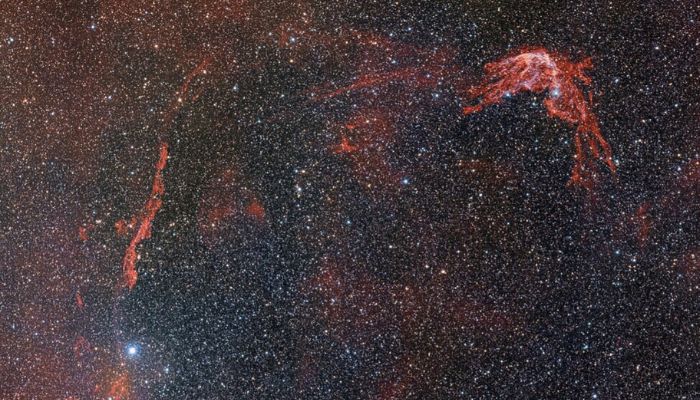This rare photo shows oldest known star explosion from 1,800 years ago
With strong telescope, we can all see explosion's aftermath hundreds of years later because ring of star remnants is still present
March 07, 2023

Over 1,800 years ago, a weird light arose out of nowhere in the sky. Chinese astronomers noted the occurrence and described it as a "guest star." The eight-month-long glow was actually an explosive supernova that occurred far within our galaxy.
Scientists from the National Science Foundation's NOIRLab, which operates large telescopes throughout the United States and worldwide, turned a massive telescope to the cosmic landscape in the 21st century and captured a unique, in-depth view of the historic explosion. RCW 86 refers to this dispersed ring-shaped cloud of space debris.
"Draped around the outer edges of this star-filled image are wispy tendrils that appear to be flying away from a central point, like the tattered remains of a burst balloon," NOIRLab said in a statement. "These cloud-like features are thought to be the glowing remains of a supernova that was witnessed by Chinese astronomers in the year 185 CE."
Astronomers used the high-resolution Dark Energy Camera, attached to the Victor M. Blanco 4-metre Telescope at the Cerro Tololo Inter-American Observatory in the dark, dry Chilean mountains, to take photographs of this burst cosmic balloon.
About 8,000 light-years away in space, the supernova blast grew quickly. The theory put forth by astronomers is that a sun-like star that had used up all of its fuel and had been reduced to a white dwarf gradually tore material from its neighbouring companion star (unlike our solar system, most solar systems have two or more stars). The immense weight of the stolen star material eventually became too much for the white dwarf to bear. It detonated after collapsing. This is referred to be a "type Ia supernova".
"These supernovae are the brightest of all and no doubt SN 185 would have awed observers while it shone brightly in the night sky," NOIRLab explained.
With a strong telescope, we can all see the explosion's aftermath hundreds of years later because a ring of star remnants is still present.
Billions of years from now, our medium-sized star will also eventually approach the end of its life. It will swell, enlarge, and turn crimson, maybe engulfing Earth in the process. But, our star won't be large enough to explode. As fuel is burned off, it will instead lose its outer layers, revealing a solid, heated core, explained Mark Kaufman in a blog post in Mashable. He added that the sun will eventually turn into a white dwarf star and spend aeons upon aeons around our galactic core.









